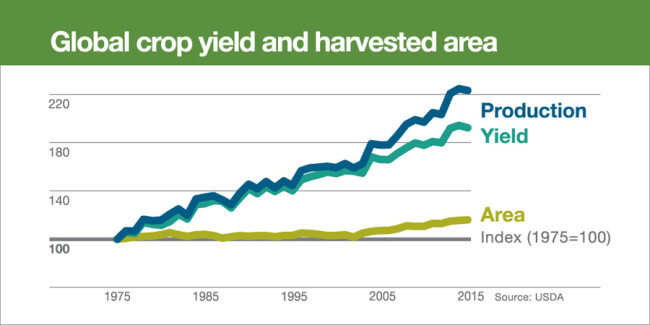We will need more food. Depending on who you ask, it could be anywhere from 30 percent to 70 percent more than we grow today.
That might sound daunting, but there is reason to be optimistic. If you look at the recent past, we’ve already achieved this feat of greatly increasing production, and we’ve done it without using much more land:

At one time in the 1960s, when the world’s population had just crossed 3 billion people, there was a common belief that this was the largest number of people the planet could support, based on the amount of food we thought we could produce at the time. Academics and policymakers feared global famine, mass starvation and a collapse in the social order.
But that didn’t happen. Instead, we more than doubled production of the major grains, oilseeds and rice crops that make up the foundation of our food system. And we did it without significantly expanding land use.































